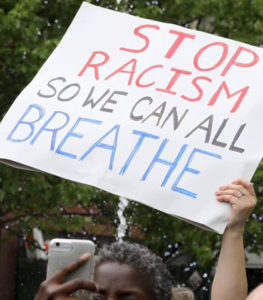Facts about systemic racism
With the Black Live Matter campaign taking hold across the world highlighting police brutality and seeking racial justice in response to George Floyd’s death at the hands of a US police officer, the issue of ‘systemic’ or ‘institutional’ racism has come to the fore.
So what is systemic racism?
 Most definitions talk about the influence of historic and current policies and practices that are deeply rooted within institutions and systems.
Most definitions talk about the influence of historic and current policies and practices that are deeply rooted within institutions and systems.
According to Mary Frances O’Dowd, a Senior Lecturer of
Indigenous Studies expert Mary Frances O’Dowd, of Central Queensland University, says systemic racism “refers to how ideas of white superiority are captured in everyday thinking at a systems level: taking in the big picture of how society operates, rather than looking at one-on-one interactions”.
“These systems can include laws and regulations, but also unquestioned social systems. Systemic racism can stem from education, hiring practices or access,” Dr O’Dowd.
Here are some key facts and statistics that help to explain how systemic racism manifests itself across industry and society:
Wealth gap
According to the Washington-based think tank the Pew Research Centre, the median wealth of white households in the United States was $US171, 000. That’s ten times the wealth of black households ($US17, 100) and eight times that of Hispanic households ($US20, 600).
Food security
Food insecurity rates for both black and Hispanic households were at least twice that of non-Hispanic white households in the US.
In 2017, 21.8 per cent of African American households and 18 per cent of Latin households reported food insecurity, while the national food insecurity rate was just 11.8 per cent.
Employment
American job candidates were more likely to get an interview when they “whitened” their name. Twenty-five per cent of black candidates received call backs from their whitened resumes, while only 10 per cent got calls when they left ethnic details on their application, according to a Harvard University study.
Twenty-one per cent of Asian Americans received call backs if they used whitened resumes, compared with 11.5 per cent who sent CVs inferring race.
In Australia, the HILDA study found the call back rate for CVs with Anglo-Saxon-sounding names was 35 per cent compared with the following minority groups: Indigenous applicants 26 per cent; Middle Eastern 22 per cent and Chinese 21 per cent.
American unemployment skyrocketed for black and white workers in the COVID-19 labour market but the unemployment rate is higher for black workers; 16.7 per cent compared to the white unemployment rate of 14.2 per cent, according to the Economic Policy Institute.
Black workers in the US are more likely to hold front-line ‘essential’ jobs —forcing them to risk their own and their families’ health to earn a wage. They make up one in six of all front-line-industry workers and disproportionately represented in the following industries: grocery, convenience stores, public transit, postal service, child care and social services.
Australian Indigenous doctors reported bullying as a source of major stress at 5.5 times and racism at nearly 10 times the rate of
their non-Indigenous counterparts, according to a Beyond Blue report.
Environmental pollution
Water contamination affects low-income areas and communities of colour across the US disproportionately, leading to health-related issues, according to an American Progress report.
The groups most impacted my water pollution: children of colour residing in rural areas, indigenous communities, and migrant farmworker communities.
Communities of colour in the Northeast and Mid-Atlantic states breathe in 66 per cent more air pollution from vehicles on average than white residents, according to a report by the US’ Union of Concerned Scientists.
Media
Only 16.6 per cent of American journalists at daily newspapers were people of colour even though 37 per cent of its population is non-white.
There is also a lack of cultural and linguistic diversity (CALD) in Australian media, with 82.7 per cent of the national entertainment and media workforce speaking only English at home, according to a PWC report.
Government
In Australia, just 4.1 per cent of parliamentarians have a non-European
background, and only 1.5 per cent have an Indigenous background, even though non-Europeans and the Indigenous make up roughly 24 per cent of country’s population.
Just 22 per cent of the United States Congress are from racial or ethnic minorities even though non-whites make up 39 per cent of the nation’s population, according to the Pew Centre.
Prison populations
Indigenous people make up just two percent of the Australian population, but 28 per cent of the adult prison population, according to the ABS.
African Americans are incarcerated in state prisons at a rate that is five times that of whites.
Arts
In Australia, less than 10 per cent of artistic directors come from culturally diverse backgrounds even though this group makes up 24 per cent of the country’s population.












